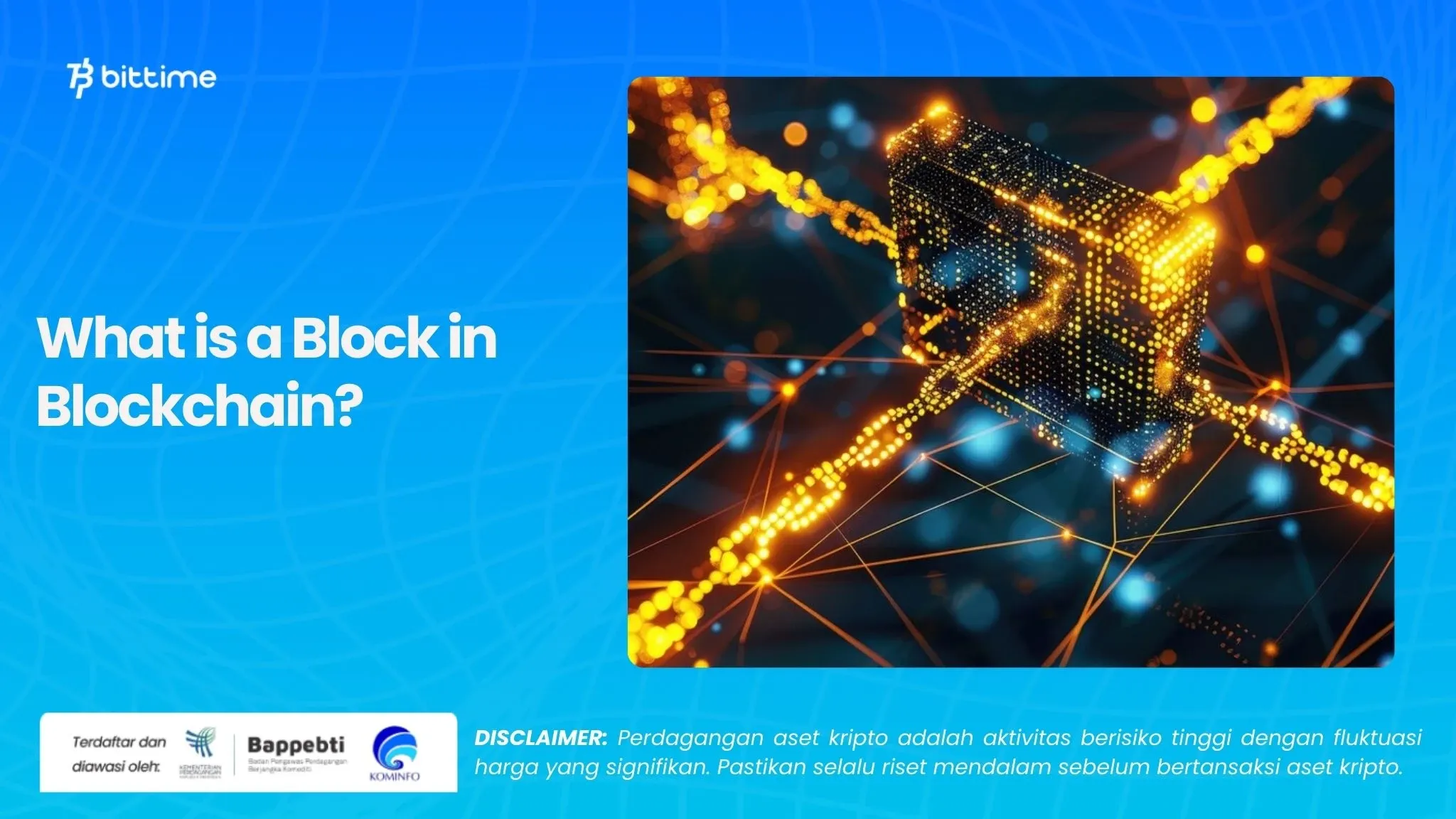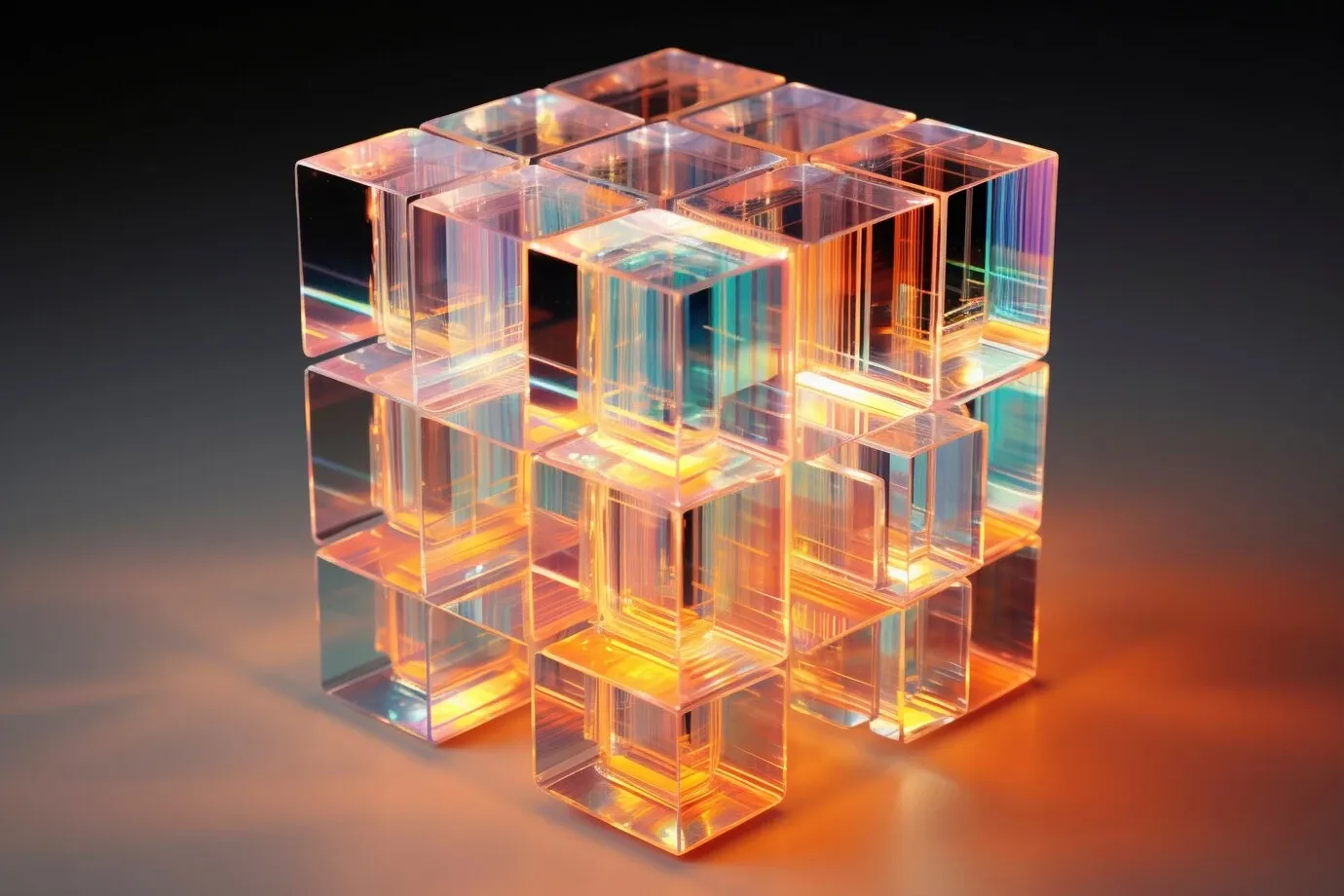What is a Block in Blockchain?
2024-08-03
Bittime - Block is the basic unit of blockchain technology, which is crucial to understanding how this revolutionary system works. Blocks form the backbone of blockchain by storing transaction data securely and decentralized.
Understanding Block Structure in Blockchain
A block in the blockchain stores important information about transactions. When a transaction occurs, such as the transfer of a crypto asset like Bitcoin or the exchange of data in a supply chain, the details are collected into a digital structure known as a block.
Block and Cryptography
This block contains not only transaction data but also a timestamp that marks when the transaction occurred. Each block is cryptographically secured with a unique identifier called a "hash", which ensures the integrity and immutability of the data.
Hash in Block and Blockchain
Hashes are generated through a complex mathematical process, and every change in transaction data produces a completely different hash. This feature makes the blockchain very resistant to fraud and hacking.
In addition, each block includes a "nonce" (a number that is only used once), which is adjusted by miners to produce a hash that meets certain criteria. This nonce is crucial in the mining process, making it competitive and ensuring the security of the network.
Main Components and Data Stored in Blocks
A block in a blockchain consists of two main parts: the block header and the block body. The block header contains:
Block Version: Shows the set of validation rules.
Previous Block Hash: Connects the current block with the previous block, creating a chain.
Merkle Root: Efficiently encapsulates all transactions in a block.
Timestamp: Records when the block was created.
Target: Define the difficulty of the mining process.
Nonce: A random number used in the hash calculation.
The block body contains a list of transactions, each including the sender and recipient addresses, the amount transferred, and the digital signatures of the parties involved. The transactions are arranged in a specific order, starting with the "coinbase" transaction, which introduces new coins into the system and rewards miners.

The Role of Block and Blockchain in Guaranteeing and Verifying Transactions
When a user initiates a crypto asset transfer, the transaction information is packaged into a block and sent to the “mempool,” awaiting validation. Miners then use their computing power to solve complex mathematical problems to validate the block’s transactions. Once verified, the block is broadcast to all nodes in the network.
These nodes confirm the validity of blocks before adding them to the blockchain, ensuring consensus and maintaining the decentralized and secure nature of the blockchain.

How Blocks Are Linked Together to Form a Blockchain
Each block in the blockchain contains its own hash and the hash of the previous block. This linking creates a continuous chain of blocks, hence the term "blockchain". Any attempt to change a block's information will change its hash, disrupting the chain.
To restore the link, an intruder would need to change the information in all subsequent blocks, an impractical task that would require enormous computing power.
Block Size and Its Impact on Scalability and Transaction Speed
The block size directly affects the number of transactions it can contain and the speed at which those transactions can be processed. Smaller blocks can hinder scalability because they can process fewer transactions at once, while larger blocks can handle more transactions, potentially increasing scalability.
However, larger blocks also require more storage space, which can lead to centralization as only miners with sufficient resources can participate, affecting the decentralization of the network.
The Importance of Consensus Mechanisms in Block Validation
Two main consensus mechanisms are used in blockchain: proof of work (PoW) and proof of stake (PoS). In PoW, miners compete to solve a mathematical problem, and the first to solve it gets to add a new block to the blockchain, requiring significant computing power.
What is Proof of Stake (PoS)?
PoS, on the other hand, selects validators based on their stake in the network, consumes less power and is more energy efficient but has the potential to cause centralization.

Overview of Block Rewards and Incentives in Crypto Assets
Block rewards incentivize miners to maintain the blockchain network. For example, in Bitcoin, miners receive a block reward, which halves approximately every four years in an event known as the “Bitcoin Halving.”
This process reduces the number of new coins entering circulation, adding an element of scarcity to the crypto asset. As block rewards decrease over time, transaction fees become increasingly important in maintaining the financial viability of mining operations.
Common Challenges and Solutions in Blockchain and Block
Blockchain technology faces challenges such as scalability, security, and energy consumption. Increasing the block size can increase transaction speed and scalability but can lead to centralization.
The proof-of-work consensus mechanism consumes significant energy, causing environmental concerns. Solutions such as proof-of-stake, sharding, and off-chain transactions are being developed to address these issues and improve the efficiency and sustainability of blockchain networks.
How to Buy Crypto with Bittime
You can buy and sell crypto assets easily and safely through Bittime. Bittime is one of the best crypto applications in Indonesia that has been officially registered with Bappebti.
To be able to buy crypto assets on Bittime, make sure you have registered and completed your identity verification. Also, make sure you have sufficient balance by depositing some funds into your wallet. Just so you know, the minimum asset purchase on Bittime is IDR 10,000. After that, you can make crypto asset purchases in the application.
Monitor the price chart movements of Bitcoin (BTC) , Ethereum (ETH) , Solana (SOL) and other cryptos to find out today's crypto market trends in real-time on Bittime.
Disclaimer: The views expressed belong exclusively to the author and do not reflect the views of this platform. This platform and its affiliates disclaim any responsibility for the accuracy or suitability of the information provided. It is for informational purposes only and not intended as financial or investment advice.


